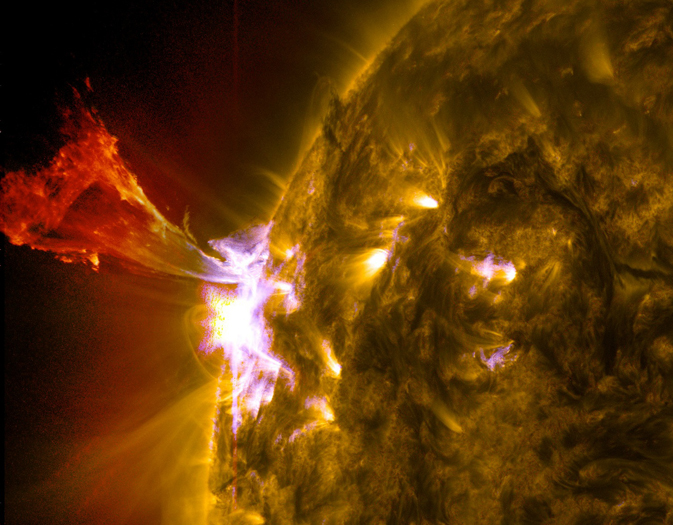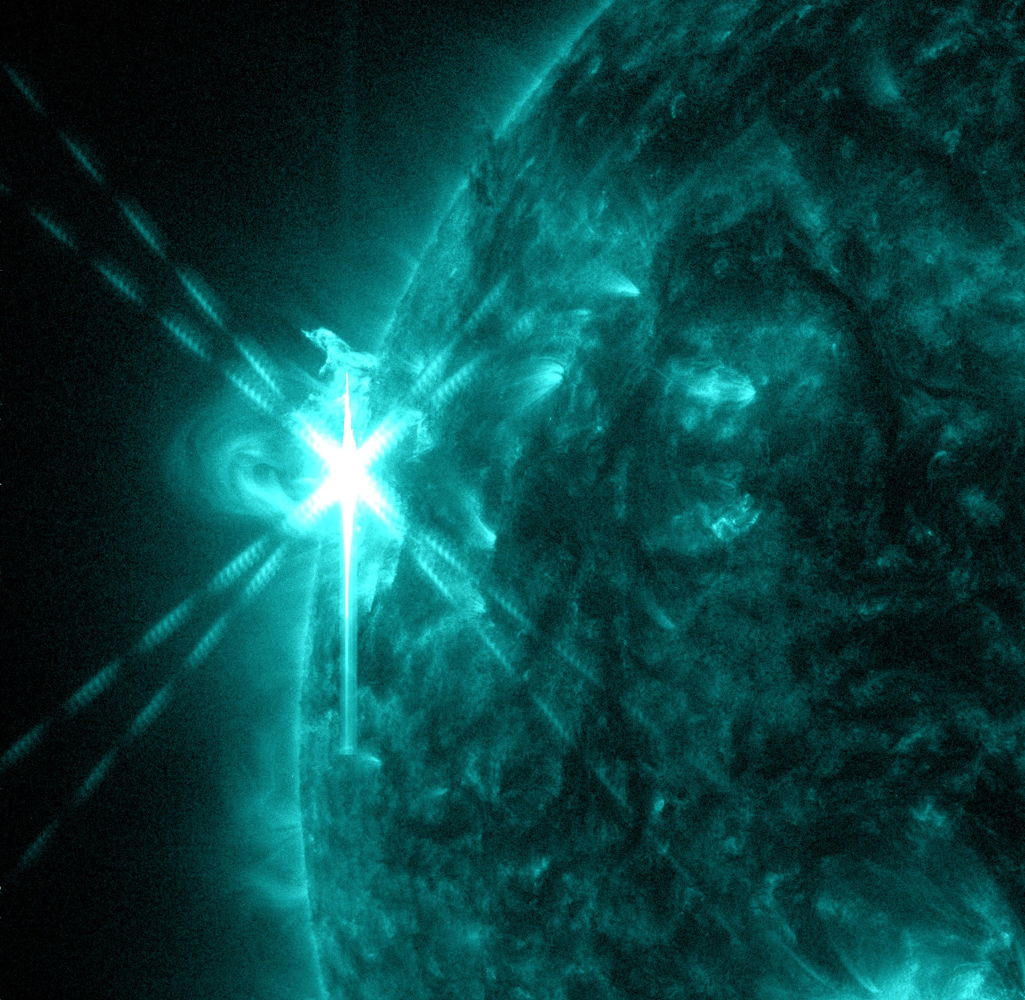Sun Unleashes Spectacular Solar Eruption (Photos)

An intense solar storm erupted from the sun on Friday (May 3) in a dazzling space weather display captured by a NASA spacecraft.
The solar flare erupted from the edge the sun, with NASA's powerful Solar Dynamics Observatory snapping photos of the sun storm. The flare peaked at 1:32 p.m. EDT (1732 GMT), registering as a relatively medium-strength M5.7-class event.
Friday's solar storm was the second major space weather event in three days, but was not aimed at Earth. According to astronomer Phil Plait, who chronicled the flare on his Bad Astronomy blog, the solar storm launched super-hot solar plasma about 120,000 miles (200,000 kilometers) above the surface of the sun before it faded from view.

The sun fired off a May Day solar eruption on Wednesday (May 1) from the same region, which is currently at the very leftmost edge (or limb) of the sun as seen by the Solar Dynamics Observatory. The active region will be rotating to face Earth soon, mission scientists said.
"Increased number of flares are quite common at the moment, as the sun's normal 11-year activity cycle is ramping up toward solar maximum, which is expected in late 2013," NASA officials said in a statement.
The strongest solar flare of the year occurred on April 11 and registered as an M6.5-class sun storm, still a mid-level event. Scientists classify solar flares based on their intensity. M-class solar flares are medium-strength events that are the weakest type of storm that can still have an impact on Earth. When aimed directly at Earth, they can super-charge the planet's aurora displays.
The strongest type of solar flare are X-class sun storms. When aimed directly at Earth, X-class solar flares can pose a threat to spacecraft and astronauts in space. They can also interfere with communications and GPS navigation signals, and cause radio blackouts.
Get the Space.com Newsletter
Breaking space news, the latest updates on rocket launches, skywatching events and more!
A radio short-lived radio blackout was caused by the Friday solar flare, but subsided quickly, NASA officials said.
The sun's current solar weather cycle is known as Solar Cycle 24. The Solar Dynamics Observatory is one of several spacecraft constantly monitoring the sun to track its solar weather events.
Email Tariq Malik at tmalik@space.com or follow him @tariqjmalik and Google+.Follow us @Spacedotcom, Facebook and Google+. Original article on SPACE.com.
Join our Space Forums to keep talking space on the latest missions, night sky and more! And if you have a news tip, correction or comment, let us know at: community@space.com.

Tariq is the Editor-in-Chief of Space.com and joined the team in 2001, first as an intern and staff writer, and later as an editor. He covers human spaceflight, exploration and space science, as well as skywatching and entertainment. He became Space.com's Managing Editor in 2009 and Editor-in-Chief in 2019. Before joining Space.com, Tariq was a staff reporter for The Los Angeles Times covering education and city beats in La Habra, Fullerton and Huntington Beach. In October 2022, Tariq received the Harry Kolcum Award for excellence in space reporting from the National Space Club Florida Committee. He is also an Eagle Scout (yes, he has the Space Exploration merit badge) and went to Space Camp four times as a kid and a fifth time as an adult. He has journalism degrees from the University of Southern California and New York University. You can find Tariq at Space.com and as the co-host to the This Week In Space podcast with space historian Rod Pyle on the TWiT network. To see his latest project, you can follow Tariq on Twitter @tariqjmalik.









